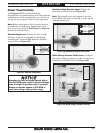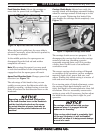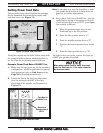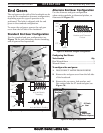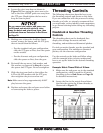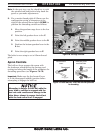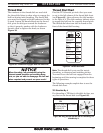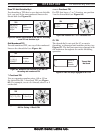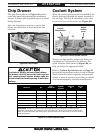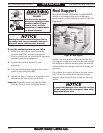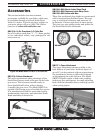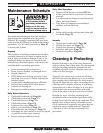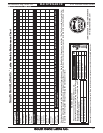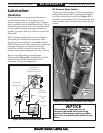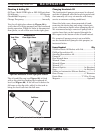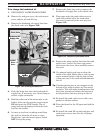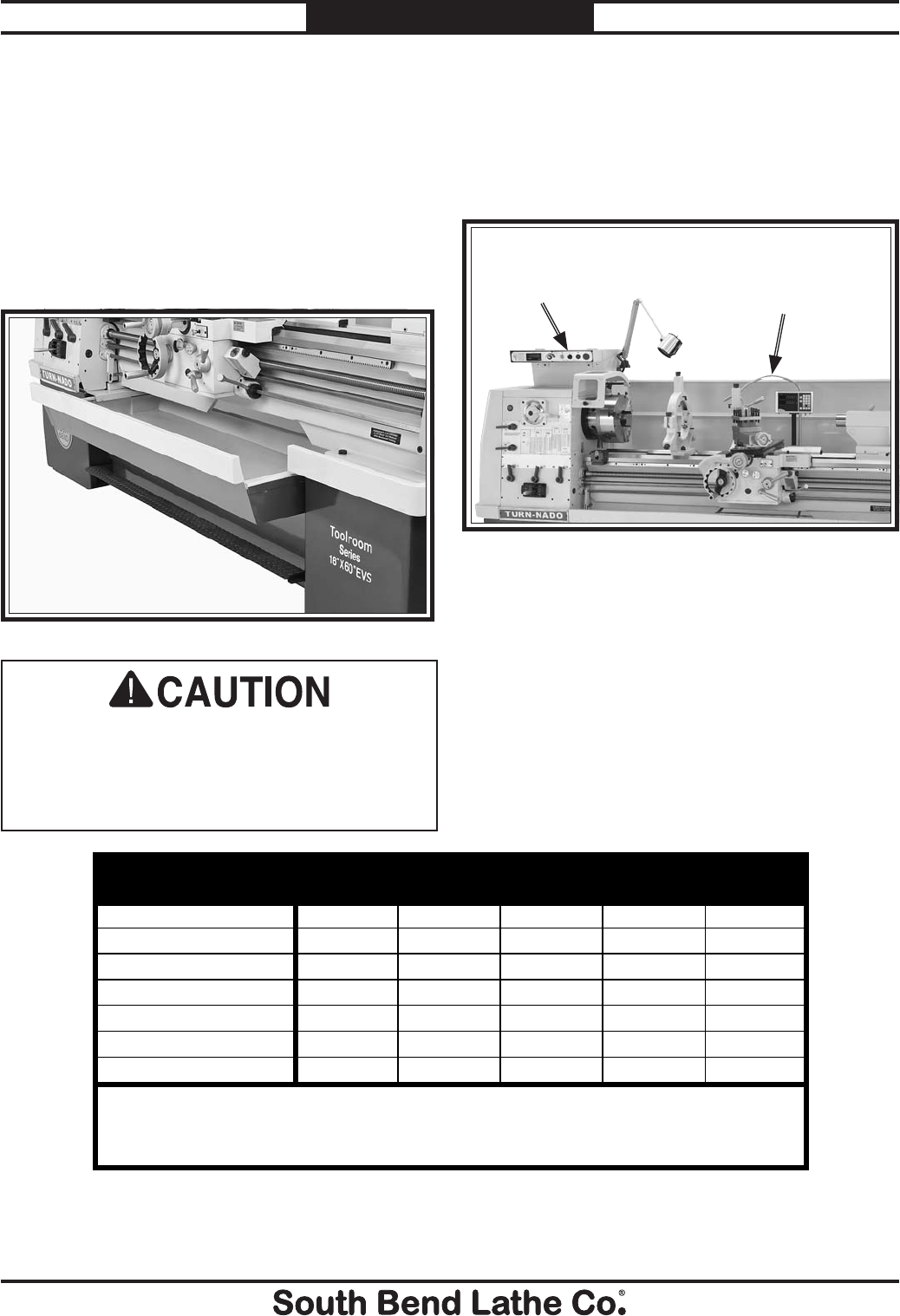
For Machines Mfg. Since 3/11 EVS Toolroom Lathe w/DRO
-63-
OPERATION
The chip drawer shown in Figure 88 catches
swarf and metal chips during the machining
process. It slides open to provide access to swarf
during cleanup.
Also, the chip drawer contains a screen that
allows run-off coolant to drain back into the
reservoir.
Chip Drawer
If pulled out quickly and more than halfway,
the drawer could fall out and hit your legs and
feet, causing impact injuries. Always open the
drawer slowly and avoid opening it more than
halfway.
Always use high quality coolant and follow the
manufacturer's instructions for diluting. The
quick reference table shown in Figure 90 can
help you select the appropriate fluid.
Refer to Coolant System Service on Page 75
for detailed instructions on how to add or change
fluid. Check the coolant regularly and promptly
change it when it becomes overly dirty or rancid,
or as recommended by the fluid manufacturer.
XX
XXX
XXX X
X
XX
XXXX
XXXX
Aluminum
Brass
Bronze
Cast iron
Low Carbon Steel
Alloy Metals
Stainless Steel
General Note: Coolants are used for heavy-duty lathe operations and production turning. Oil-water
emulsions and synthetic cutting fluids are the most common for typical lathe operations. Sulferized oils
often are used for threading. For small projects, spot lubrications can be done with an oil can or brush, or
omitted completely.
Workpiece Dry
Water
Soluble Oil
Synthetic
Coolants
Sulferized
Oil
Mineral
OIl
Figure 90. Coolant selection table.
Coolant System
When the coolant pump switch is turned ON, the
fluid is delivered through the nozzle attached to
the carriage. The flow is controlled by the valve
lever at the base of the nozzle (see Figure 89).
Figure 88. Chip drawer.
Figure 89. Coolant system controls.
Coolant
Pump Switch
Nozzle
& Valve
Lever



